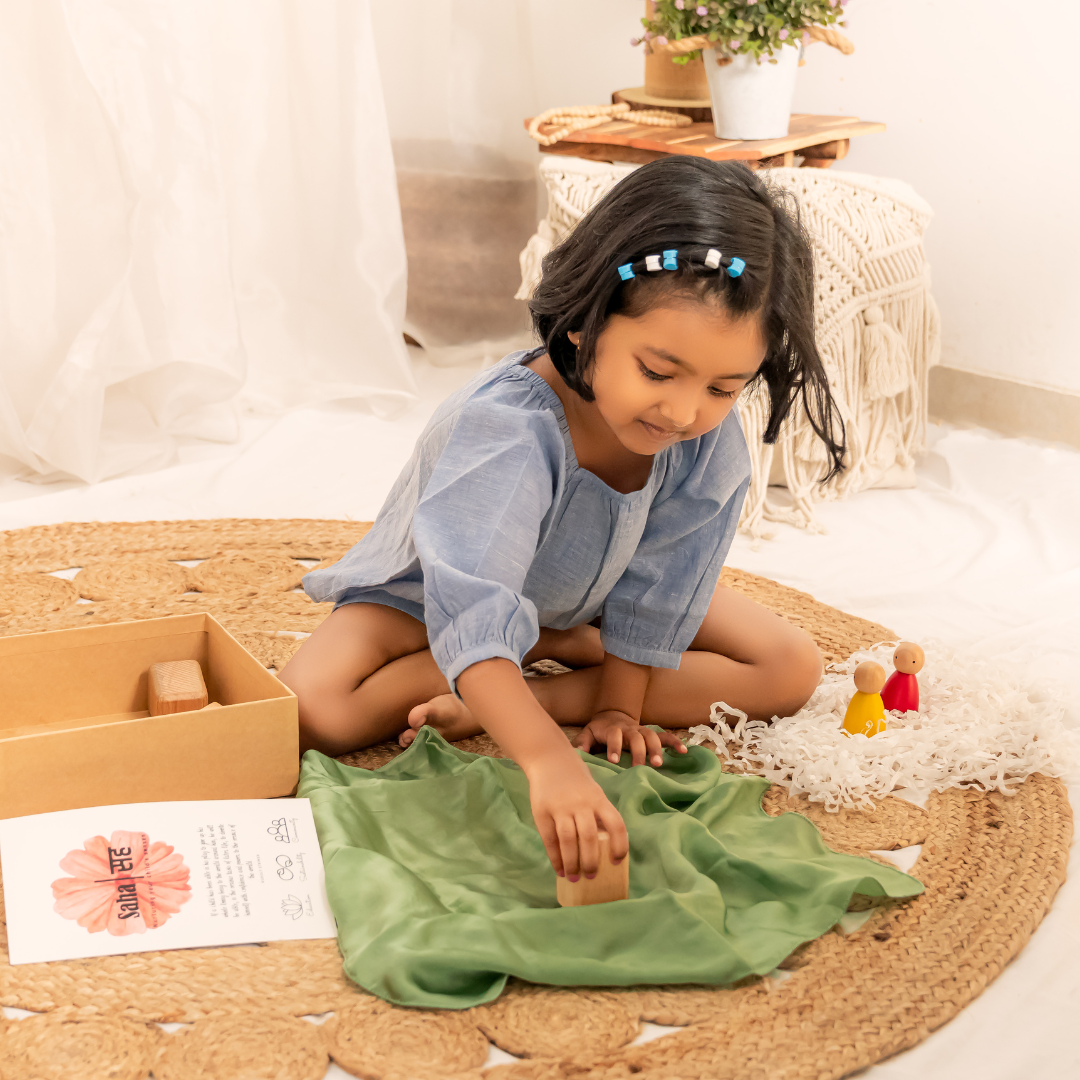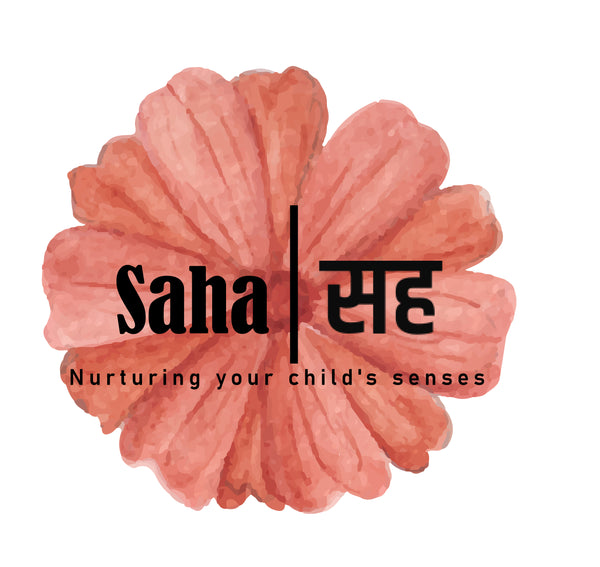
How to Use a Playsilk for Open-Ended, Versatile Play: A Guide for Montessori and Waldorf-Inspired Homes
Share
When it comes to nurturing creativity and imagination in young children, few toys are as versatile and engaging as the playsilk. This simple, beautiful piece of silk can become an essential tool for open-ended play, aligning perfectly with both Montessori and Waldorf educational philosophies. In this post, we’ll explore creative ways to use a playsilk, highlighting its role in supporting imaginative play, sensory development, and holistic growth.
What Is Open-Ended Play, and Why Is It Important?
Open-ended play is play without fixed rules or a set outcome. Instead of using toys designed for a single purpose, open-ended play lets children use their imaginations and decide how they want to play. Playsilks are ideal for this type of play because they can transform into anything a child envisions—a river, a superhero cape, a picnic blanket, or a doll's dress.
This approach to play encourages creativity, problem-solving, and self-expression. Montessori and Waldorf education both emphasize versatile play, using toys that grow with the child and provide new ways to explore as they age and develop new skills.
10 Creative Ways to Use a Playsilk in Open-Ended Play
- Imaginative Dress-Up: Playsilks make wonderful costumes! In the blink of an eye, your child can transform into a princess, a superhero, or a woodland fairy. Tie it around their shoulders as a cape, wrap it like a skirt, or use it as a hat. This open-ended dress-up play helps boost confidence, creativity, and storytelling skills.
- Scenic Backdrops for Small World Play: Lay a playsilk down as a forest floor, an ocean, or a grassy meadow to create a landscape for your child’s small animal toys or dollhouses. This use aligns perfectly with Waldorf and Montessori-inspired play, encouraging children to connect with natural settings while sparking imaginative scenarios.
- Colorful Movement Props: Use playsilks for active play by encouraging your child to wave, twirl, and dance with them. This can stimulate gross motor development, coordination, and body awareness. The flowing nature of silk moves gracefully with a child’s body, inviting them to explore different forms of expression.
- Storytelling and Puppet Shows: Playsilks can be used as props in storytelling or puppet shows, a favorite activity in Waldorf-inspired environments. Use different colors to represent characters, emotions, or parts of the story, creating a visual element that brings tales to life and enhances a child's love for narrative.
- Building Forts and Hideaways: Encourage your child to drape playsilks over furniture or combine them with wooden frames to create cozy nooks and hideaways. These forts can become secret reading spaces, pretend castles, or quiet spots for rest and reflection.
- Nature Exploration: Take playsilks outdoors and integrate them into nature play. They can become leafy beds for dolls, picnic blankets for toy animals, or gentle streams to add to forest or garden scenes. Using them in outdoor play fosters a deeper connection to nature, a key component of Waldorf education.
- Learning Colors and Counting: Introduce simple math concepts by using playsilks in different colors. Practice counting, color recognition, and matching activities that are age-appropriate and engaging. This approach aligns well with Montessori learning, where hands-on materials support foundational skills.
- Mindfulness and Sensory Exploration: Playsilks, with their soft, flowing texture, are a sensory delight. Invite your child to touch, crumple, and wave them gently, observing how they respond to each movement. This activity provides a mindful, calming experience and helps children develop an awareness of their senses.
- Seasonal and Festival Decorations: In Waldorf-inspired homes, playsilks are often used to reflect seasonal colors. Place a green playsilk in springtime or an orange one in autumn as part of a nature table display, or use them as simple seasonal decorations that teach children about the natural rhythm of the year.
- Exploring Science Concepts: Playsilks can even introduce early science concepts. Use them to demonstrate the movement of wind or water, explaining how these natural elements interact with the world. The tactile experience of watching a playsilk ripple and float can be an introduction to understanding airflow, lightness, and gravity.
Why Playsilks Fit in Montessori and Waldorf Settings
In both Montessori and Waldorf education, toys are seen as tools to support self-directed learning and creativity. A playsilk fits naturally into this approach because it is both simple and profoundly adaptable, allowing children to lead their play. Montessori principles prioritize toys that serve multiple functions and foster independence, while Waldorf education values toys made from natural materials that stimulate the senses and connect children to the natural world.
Playsilks, with their organic colors and flowing movement, embody these ideals. They’re sustainably made and offer a sensory experience that respects a child’s development at each stage.
Tips for Choosing the Right Playsilk
- Look for Natural Materials: Pure silk playsilks are best because they offer the ideal combination of softness, durability, and natural beauty. They’re also free from harsh chemicals, making them safe for young children.
- Choose Soothing Colors: In Waldorf-inspired settings, gentle, nature-inspired colors are preferred. Colors like soft greens, blues, and pastel pinks help create a calming play environment.
- Select Different Sizes: While standard playsilks work for most uses, larger playsilks allow children to build larger structures, while smaller ones can be more manageable for young children.
Final Thoughts
Incorporating playsilks into your child’s play environment provides a simple but powerful tool for open-ended, versatile play. With endless uses, playsilks help children explore creativity, movement, storytelling, and sensory awareness—all of which are cornerstones of Montessori and Waldorf educational philosophies.
So whether you’re setting up a nature-inspired play space or encouraging a love for imaginative play, a playsilk can help foster a world of discovery for your child.
